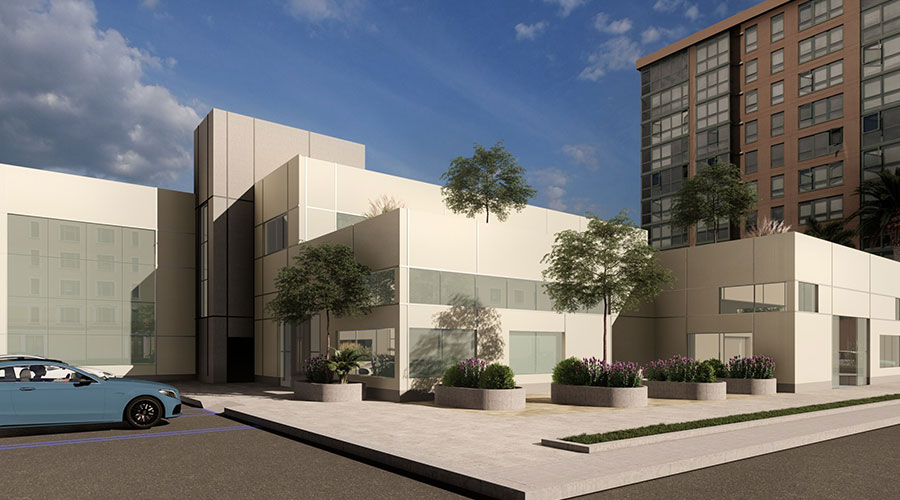To put it simply: hospitals are a stressful place to be. What was expected to be a routine visit can end up being a week-long stay. The unpredictability of these life events can take a toll on a patient and their family – especially if children are involved. While healthcare facilities can bring on an insurmountable amount of stress, there can be certain amenities added to help add some needed relief.
Healthcare Facilities Today recently spoke with Nicki Hellem, associate principal, senior interior project manager, Perkins&Will on how designers can address the specific needs of children and their families while they are admitted to a hospital.
HFT: How do you address the specific safety needs of children, particularly those with varying levels of mobility and special needs?
Nicki Hellem: We use safety strategies like removing trip hazards and allowing for larger entries for those in wheelchairs or parents using strollers. This also gives child life therapists the option to use wagons to transport kids to play/art/music therapy spaces, where we also allow space to “park” them. We want children of all heights and mobilities to be able to enjoy positive distractions installed throughout the space, so we design with this in mind, ensuring art and more can be enjoyed from a variety of vantage points.
Designing for special needs, both physical and mental, is extremely important. This involves awareness of how light and noise affect mental health. We want to help people stay calm, so we consider how a person with autism may be affected, for example, making sure we use softer lighting and materials to make sounds quieter. This helps an unfamiliar space feel less overwhelming. Giving patients control over the light in their room can also go a long way, as some prefer their space darker, while others want it fully illuminated.
HFT: How do you design spaces to accommodate and support the families of patients?
Hellem: We make sure there is a designated family zone with amenities like space for parents or visitors to work and sleep. We also include space for storage of personal items and elements like small tables where families can play games or have a family meal—those touches can make a big impact. It’s also helpful to create community zones within a unit for families who may be going through similar situations to connect.
Additionally, we prioritize intuitive wayfinding. This goes above and beyond standard signage. We install recognizable elements that help visitors and families remember their way around the space and create “moments of destination” that lead people to their next point. This removes unnecessary stress.
Related: Disney and Pixar Art Puts Patients at Ease
HFT: What amenities and features do you include to ensure families can stay comfortably during long visits or stays?
Hellem: For inpatient rooms, we include sleeper sofas that will accommodate at least one adult comfortably. We also install designated countertops and charging areas for people to use their electronic devices, which allows parents to continue running a household while their child is in the hospital.
In a NICU, we’ll design a “rooming-in room” for parents to stay with their baby as they transition from the hospital to home. Laundry rooms with washer/dryer can also be beneficial for families staying for a long period of time.
HFT: What inclusive design practices do you implement to cater to a diverse patient population?
Hellem: It is very important to research, understand, and cater to the community where the facility is located. Integrating the local culture into the design is a key strategy. It can be helpful to use a community outreach program for local artists. Another crucial element of catering to a diverse patient population is making and/or selecting artwork that appeals to all ages, ethnicities, genders, etc. We want to develop a design that is place-based enough to feel familiar and inviting, while universal enough to embrace everyone who enters.
To accommodate diversity within a given community, it is important to allow patients and families a degree of customizability and choice in their space. For example, allowing a child to select the theme of the signage on their door or even the background on a digital display in their room can make a difference. Giving patients the ability to select a color or image on the ceiling in an imaging room, to bring in or rent a gaming device, or to choose whether their seat in an infusion center is private or with a group of friends they might have made during treatment—these are all ways to give patients a more tailored experience of care. This makes them feel more at home, more relaxed, and it gives them a sense of control while living through treatment, symptoms, and other circumstances that are completely out of their control. We also include step stools in restrooms or sinks at a lower height so that the littlest of patients feel empowered to do things like wash their hands without having to rely on a family member’s support. While considering the space’s emotional impact, we are sensitive to things like an automatic flush that adults may not think twice about but might scare younger children.
Mackenna Moralez is the associate editor of the facilities market.

 How Healthcare Facilities Can Be Truly Disaster-Resilient
How Healthcare Facilities Can Be Truly Disaster-Resilient TriasMD Breaks Ground on DISC Surgery Center for San Fernando Valley
TriasMD Breaks Ground on DISC Surgery Center for San Fernando Valley Bigfork Valley Hospital Falls Victim to Data Breach
Bigfork Valley Hospital Falls Victim to Data Breach AI-Driven Facilities: Strategic Planning and Cost Management
AI-Driven Facilities: Strategic Planning and Cost Management  Double Homicide Suspect Hides from Police in Upstate Community Hospital
Double Homicide Suspect Hides from Police in Upstate Community Hospital